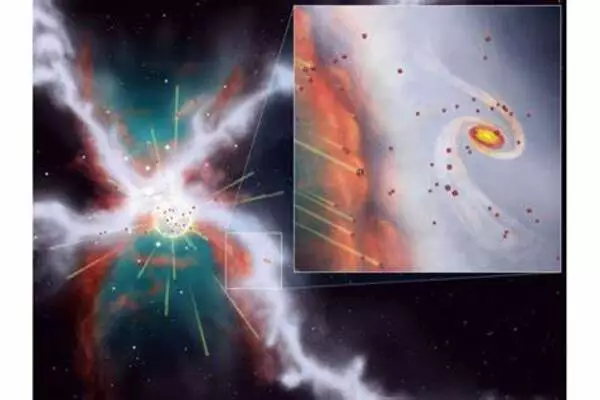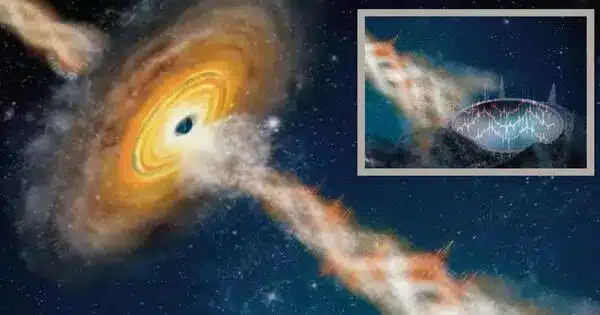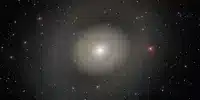Supernova explosions produce massive amounts of energy, including high-energy radiation such as gamma rays and X-rays, as well as a hail of particles and debris. These can have a number of consequences on surrounding star systems and may be detrimental to nascent planetary systems.
The specifics of how a molecular filament may operate as a shield in such a setting, however, would be determined by a number of factors, including the distance between the supernova and the young solar system, the density and composition of the molecular filament, and the timing of the supernova event.
Meteorite isotope ratios indicate that a supernova detonated nearby while the Sun and Solar System were still developing. However, the blast wave from such a close supernova could have obliterated the young Solar System. According to new estimates, the Solar System’s birth cocoon, a filament of molecular gas, aided in the acquisition of the isotopes present in meteorites while also acting as a buffer buffering the nascent Solar System from the surrounding supernova blast.
The scientists calculated that if the Sun formed along a dense molecular gas filament and a supernova detonated at a nearby filament hub, it would take at least 300,000 years for the blast wave to break up the thick filament encircling the emerging Solar System.
Primitive meteorites preserve information about the conditions that existed at the time the Sun and planets were born. The meteorite components have an inhomogeneous concentration of a radioactive aluminum isotope. This variation implies that a small amount of radioactive aluminum was injected shortly after the Solar System formed. The best candidate for this influx of additional radioactive isotopes is a nearby supernova explosion. However, a supernova close enough to deliver the amount of isotopes seen in meteorites would have also produced a blast wave powerful enough to tear the young Solar System apart.
In astrophysics, various factors can influence the formation and evolution of star systems, and the interplay between these factors can be quite complex. While it’s possible that molecular clouds or filaments in space could play some role in shielding developing star systems from the effects of nearby supernovae, more research and evidence would be needed to support this idea.

The National Astronomical Observatory of Japan, directed by Doris Arzoumanian, provided a new theory for how the Solar System acquired the number of isotopes detected in meteorites while surviving the supernova shock. Stars originate in big groups known as clusters among massive clouds of molecular gas. These molecular clouds are filamentary in nature. Small stars, such as the Sun, form along the filaments, while big stars, which burst in a supernova, form in the hubs where numerous filaments intersect.
The scientists calculated that if the Sun formed along a dense molecular gas filament and a supernova detonated at a nearby filament hub, it would take at least 300,000 years for the blast wave to break up the thick filament encircling the emerging Solar System.
The components of radioactive isotope-enriched meteorites developed within the thick filament during the first 100,000 years of the Solar System’s creation. The parent filament may have worked as a buffer to shield the infant Sun, catching radioactive isotopes from the supernova blast wave and channeling them into the still-forming Solar System.
















